With the help of the Instant Pot, this Easy Vegan Cauliflower Chickpea Curry cures a craving for warm, spicy food in record time!
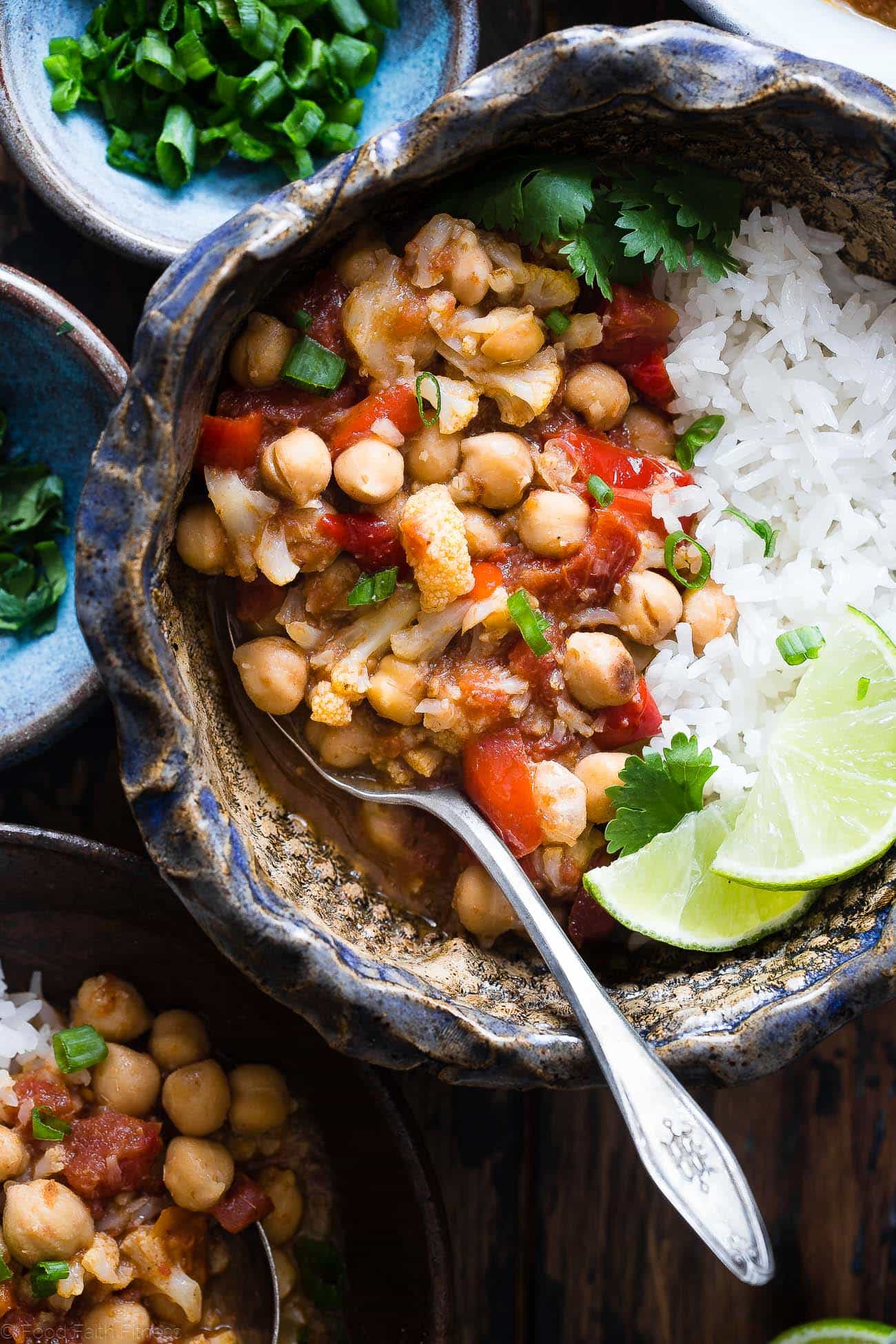
Last week, it was cold and rainy here, but the week before that, it almost felt like summer. Ah, such is the stop-and-start nature of spring. Even though the weather always flip-flops a few times before the flowers can bloom, and though I know spring is coming, I still get sad when the cold air and cloudy skies come back. It’s funny how quickly I reach for my winter comfort foods at the first hint of chilly air.
As such, last week, I made four batches of what I consider to be “winter food”: gumbo, chili, red beans with sausage, and cauliflower chickpea curry. The last one was particularly satisfying, warming, and perfect for the return of blustery weather—plus, it’s free of animal products, so you can share it with your vegan friends.
This cauliflower and chickpea curry recipe is made easier than your average curry, because it utilizes the Instant Pot for added convenience. Cauliflower and chickpeas combine to make a substantive texture that fills you up, while the tomatoes and coconut milk mix with the spicy flavors of yellow curry paste, creating a creamy sauce that coats every grain of rice (or whatever you choose to serve it with). The cilantro is one of those garnishes that I think is absolutely necessary, so don’t skip it on this dish!
Is This Easy Vegan Cauliflower Chickpea Curry Healthy?
Yes, this is a healthy curry dish! The chickpeas offer plenty of protein and fiber, along with B vitamins and minerals like magnesium and potassium. Cauliflower is low in fat, calories, and carbs, and offers fiber and vitamins B6, C, and K, while tomatoes are a good source of antioxidants.
The coconut milk does contain a lot of saturated fat, so keep that in mind if you’re trying to cut down your saturated fat consumption. I don’t suggest using light coconut milk for this recipe, but you can potentially use cashew cream as a healthier substitute for full-fat coconut milk. Another concern is the high sodium content per serving. If you’re trying to lay off the sodium in your diet, try using coconut aminos instead of low-sodium soy sauce, and consider making your own chickpeas from dried beans, as they will contain less sodium.
This dish can easily be made gluten-free by substituting tamari or coconut aminos for soy sauce. It’s also not a bad idea to check the curry paste for gluten!

Delicious Additions And Swaps For Chickpea Curry
Don’t stop at chickpeas and cauliflower with this one, folks. This recipe is good no matter what you throw in the pot! Consider adding some mild, quick-cooking greens, such as baby spinach or chopped Swiss chard. Onions end up in most of my curries, so you can also add sliced onions to the sauté step in this recipe. And to me, Thai curry isn’t complete without some lightly-cooked fresh green beans! If you add green beans, boil or sauté them separately, and add them to the finished curry. Keep in mind though, if you add lots more bulky ingredients, you may need to add a bit more coconut milk or tapioca starch to keep it thick and saucy!
If you like things spicy, throw in some crushed red pepper, Thai chili, or a dash or two of cayenne pepper. And to cool things off a bit, feel free to add a drizzle of coconut cream or cashew cream to your bowl!
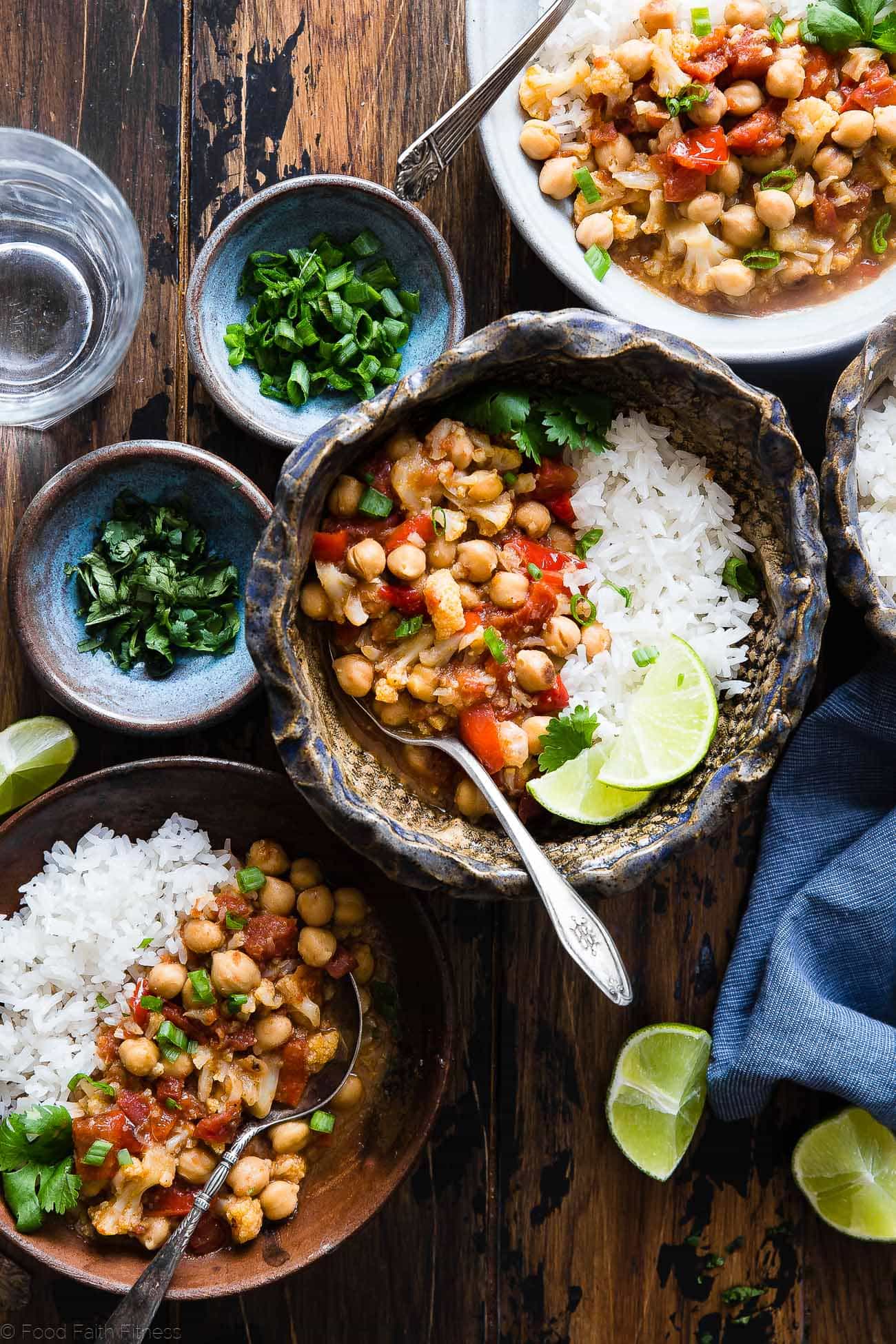
How Do I Store Leftovers?
If you have leftover curry, or simply made a double batch for leftovers (smart!), you can store it in the fridge in an airtight container for about 4 days. In the freezer, I recommend storing it in a freezer-safe ziplock bag or container for up to 3 months. Thaw it in the fridge overnight before reheating on the stove or in the microwave.
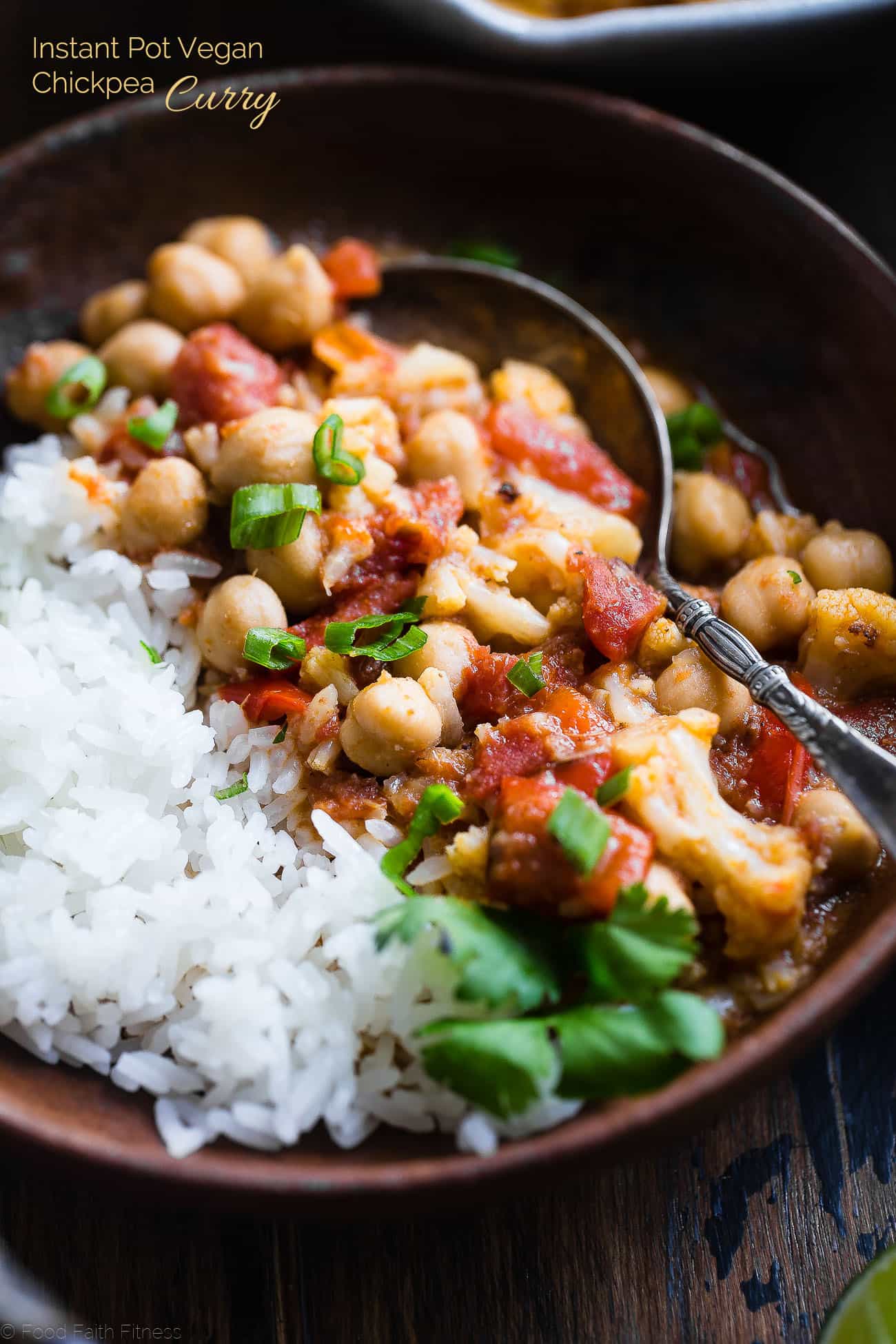
Serving Suggestions
I serve this curry with a side of brown rice, and it would also taste great on top of Cilantro-Lime Brown Rice. You can also use Cauliflower Rice or even quinoa. If you’re serving this as part of a larger dinner spread, try a side of Oven-Roasted Lemon Greek Potatoes and lots of roti flatbreads.

Recipe
Ingredients
- 1 tablespoon coconut oil
- ½ large red pepper roughly chopped
- 15 ounces canned petite diced tomatoes about 1 can, very well drained
- 1 cup full-fat coconut milk
- 1 tablespoon yellow curry paste
- 2 teaspoons tapioca starch
- 1 tablespoon reduced-sodium soy sauce
- ½ tablespoon coconut sugar
- 15 ounces canned chickpeas about 1 can, drained and rinsed (not sodium-reduced)
- 2 cups cauliflower cut into large florets
- Squeeze of fresh lime juice
- Pinch sea salt
- Cilantro for garnish
- Green onion for garnish
- Cooked white rice or cauliflower rice, for serving
Instructions
- Heat the coconut oil on the "sauté" setting of your Instant Pot. Once it's hot, add in the chopped red peppers and cook for 2 minutes.
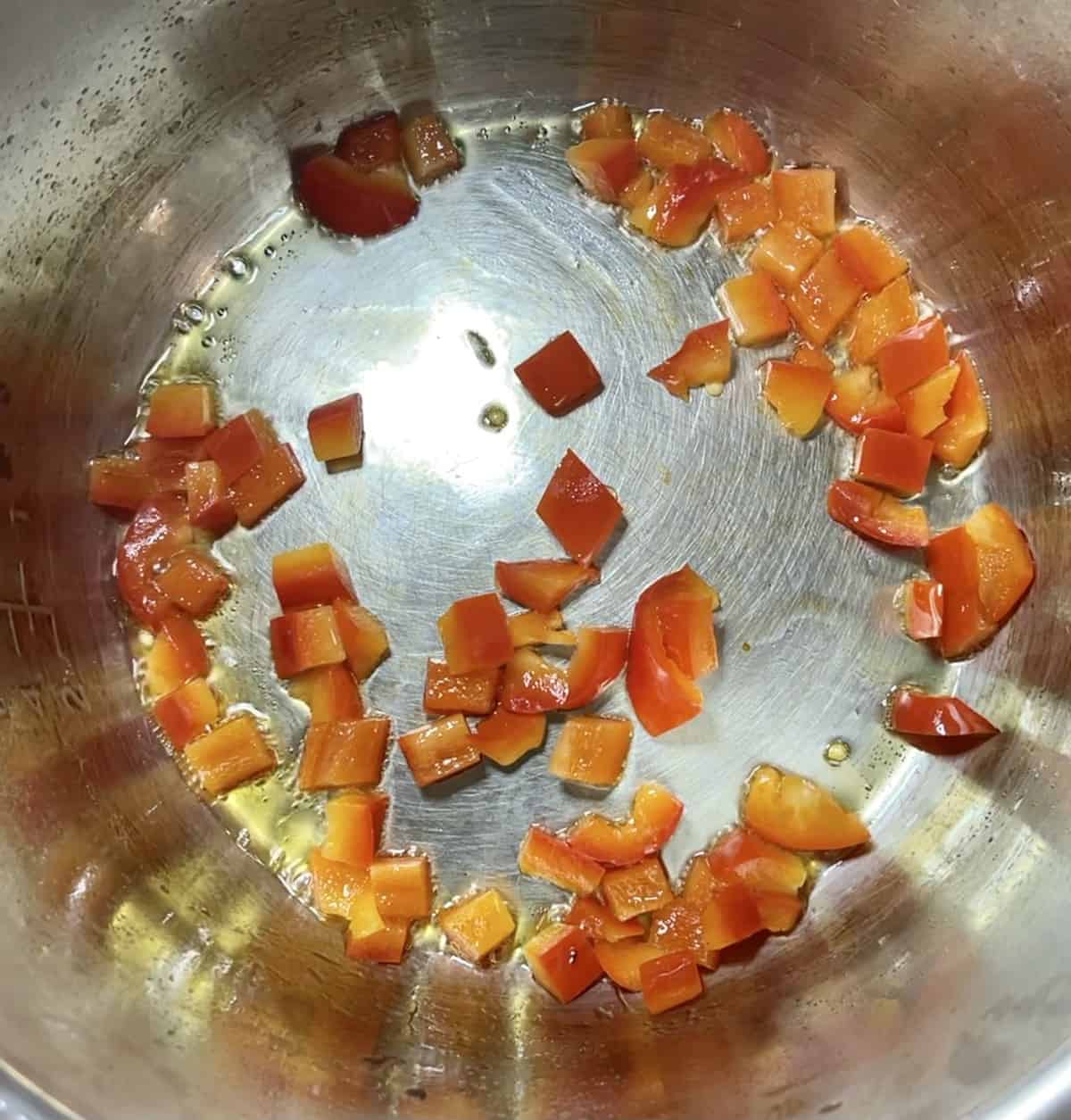
- Add the well-drained petite tomatoes, coconut milk, and curry paste, stirring until the paste is dissolved. Bring to a boil and let it cook for 2 minutes, stirring frequently.
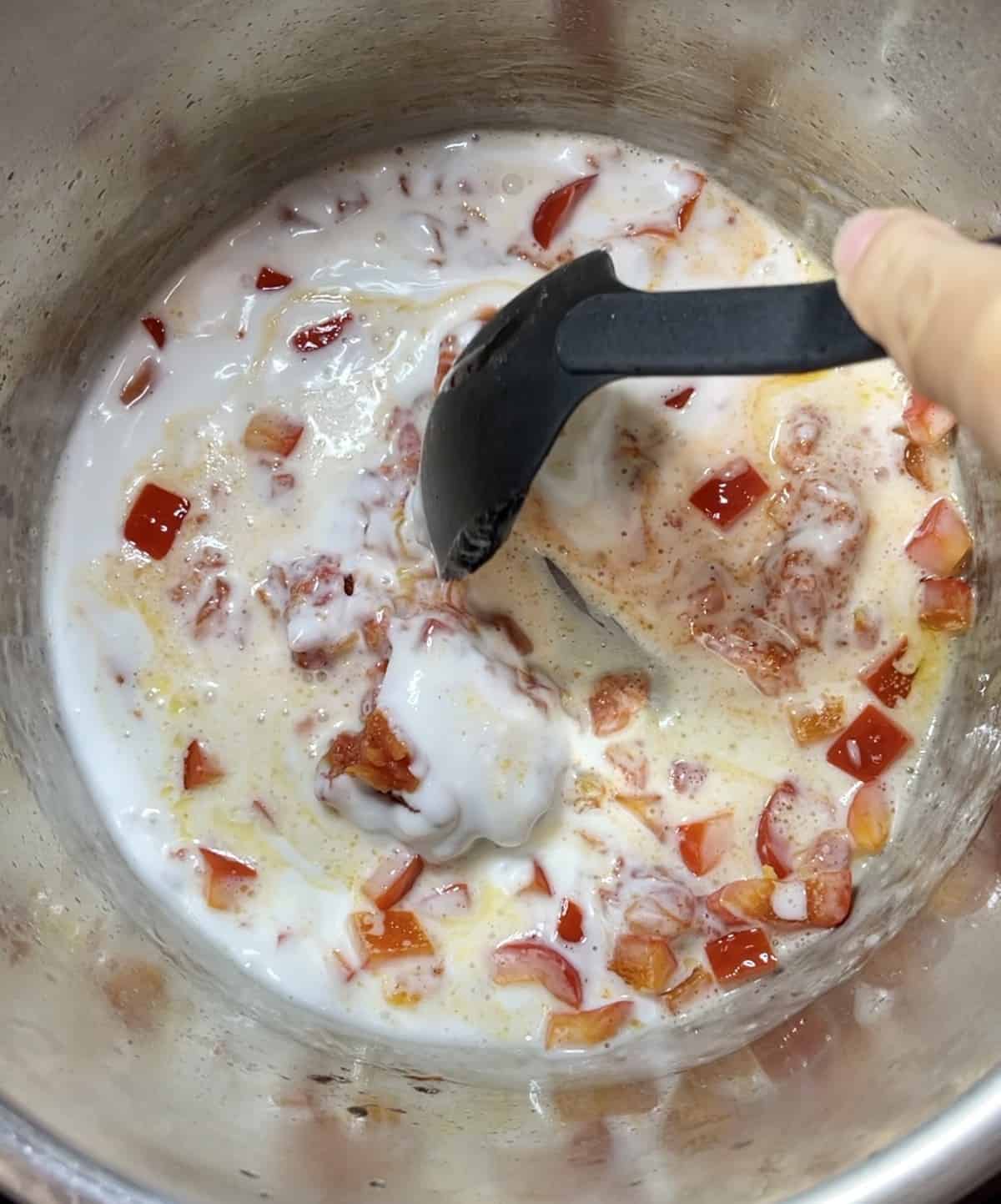
- In a small bowl, whisk together the tapioca starch with 4 teaspoons of the hot liquid from the Instant Pot until smooth. While constantly stirring, whisk the tapioca starch back into the Instant pot, along with the soy sauce and coconut sugar. Boil until the mixture begins to thicken, about 1 minute.
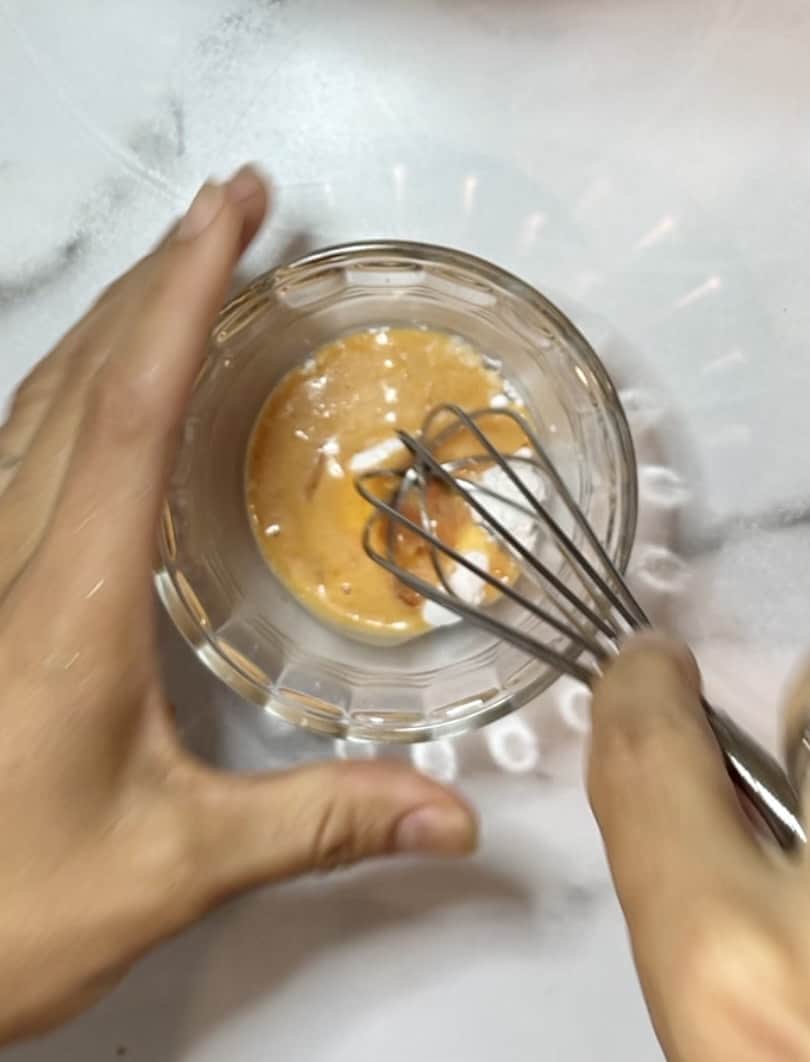
- Stir in the can of chickpeas and cauliflower. Cover the Instant Pot and make sure it's set to sealing, then cook for 5 minutes on the manual high pressure setting. Let it naturally release pressure after the timer goes off.
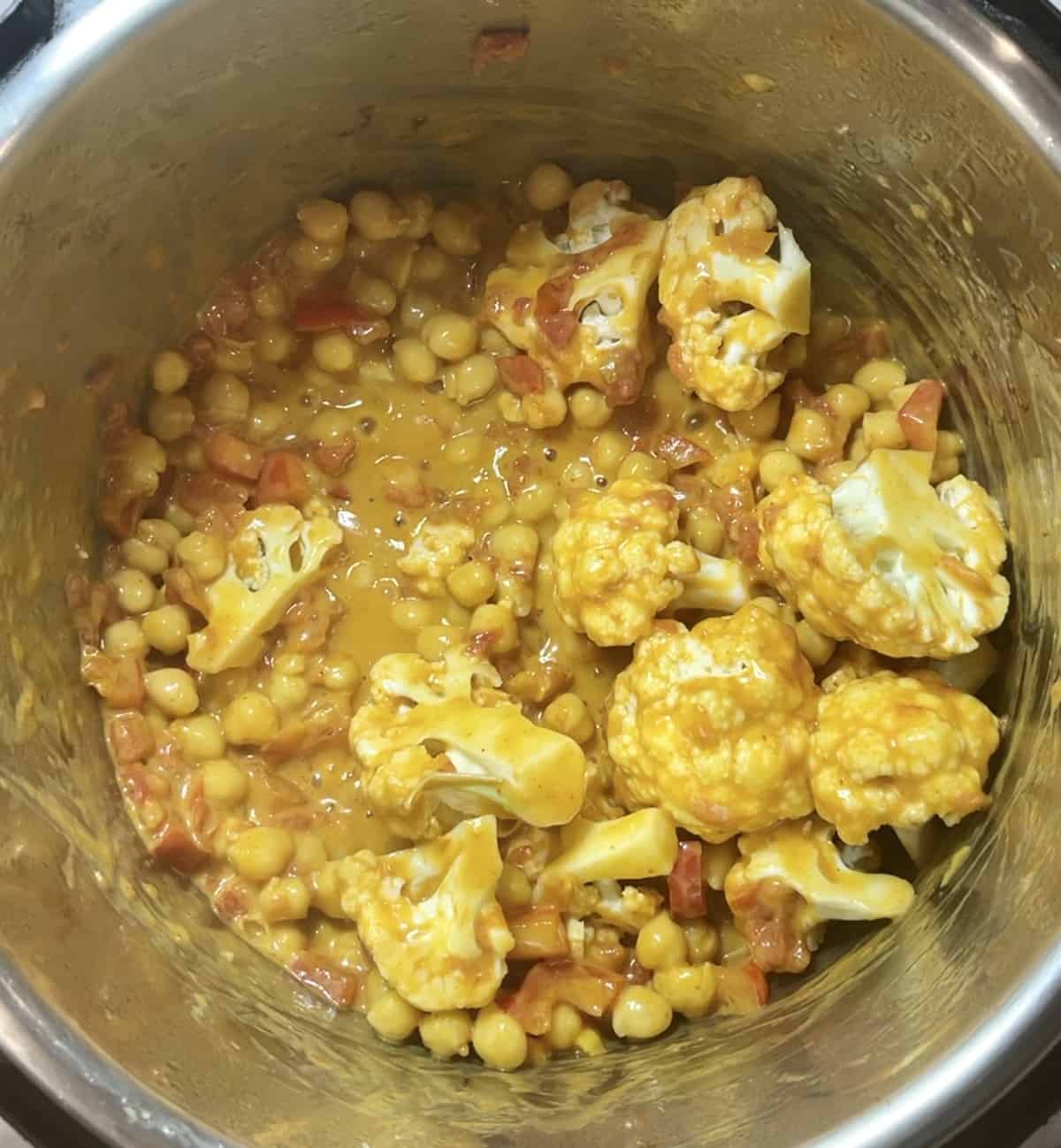
- Once the pressure has released, squeeze in fresh lime juice and add salt to taste.
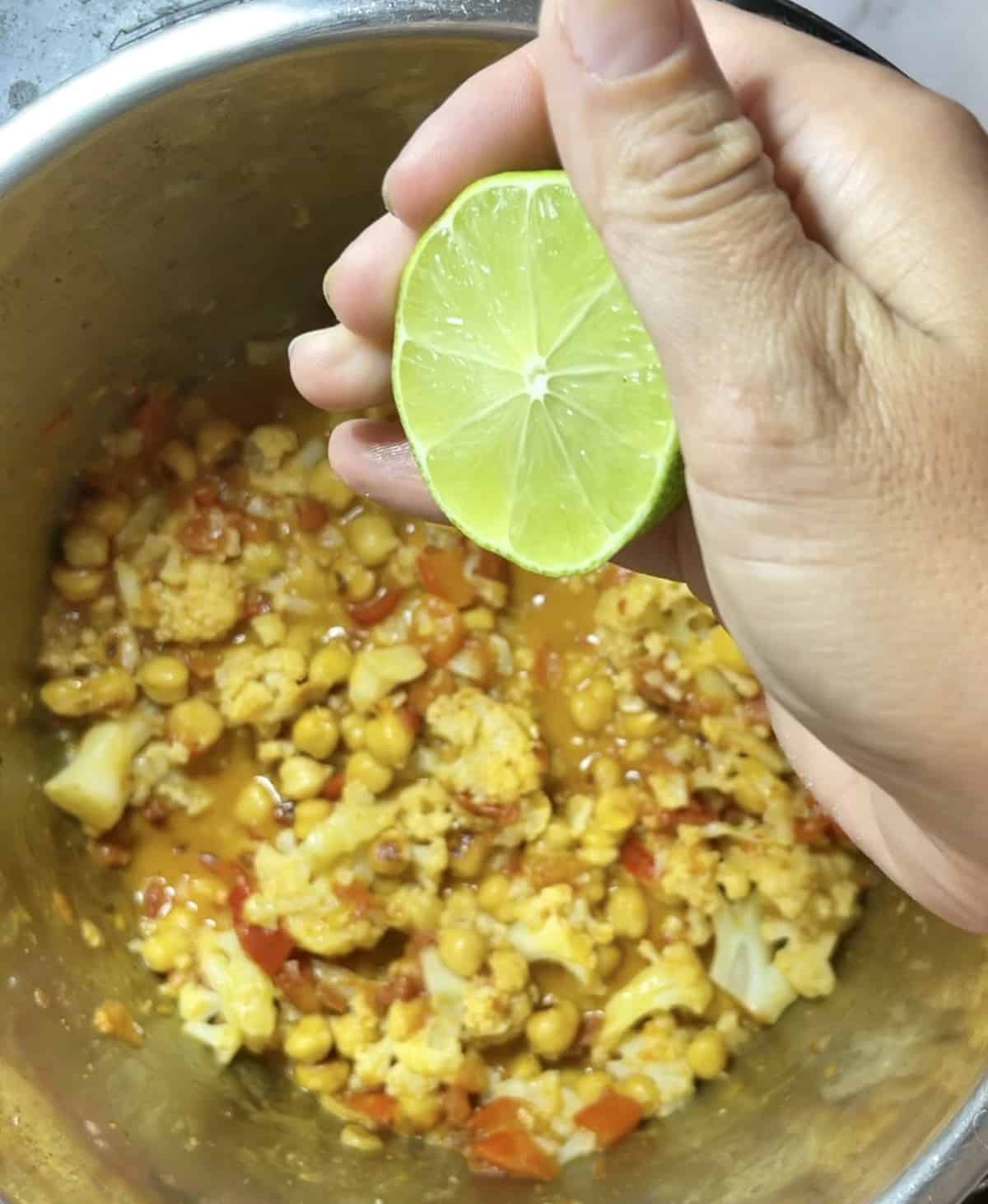
- Garnish with cilantro and green onion, and serve over rice.
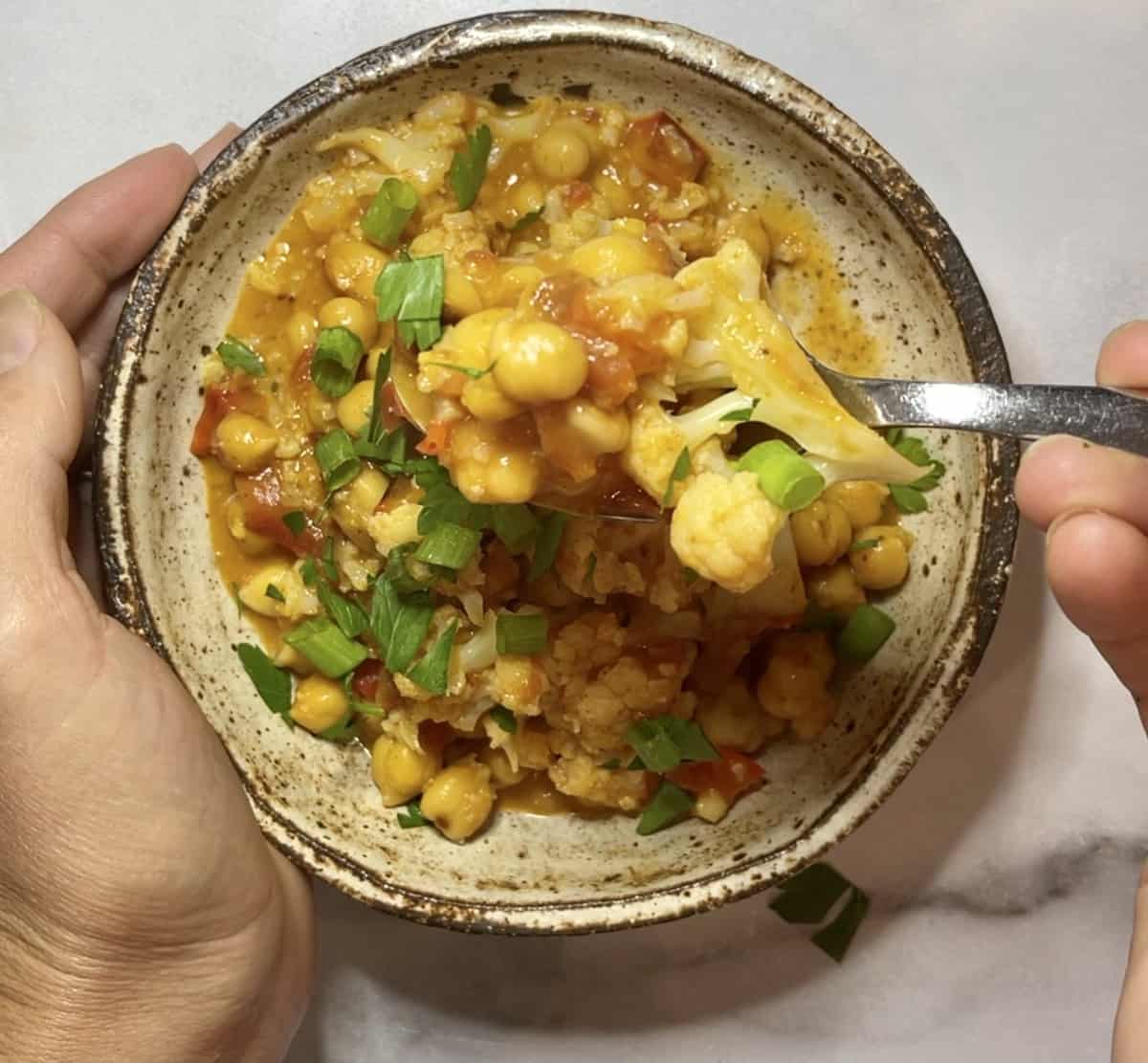
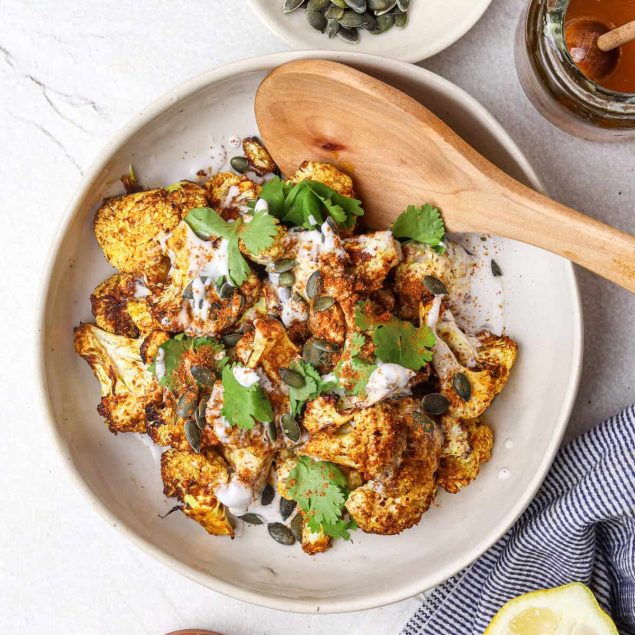
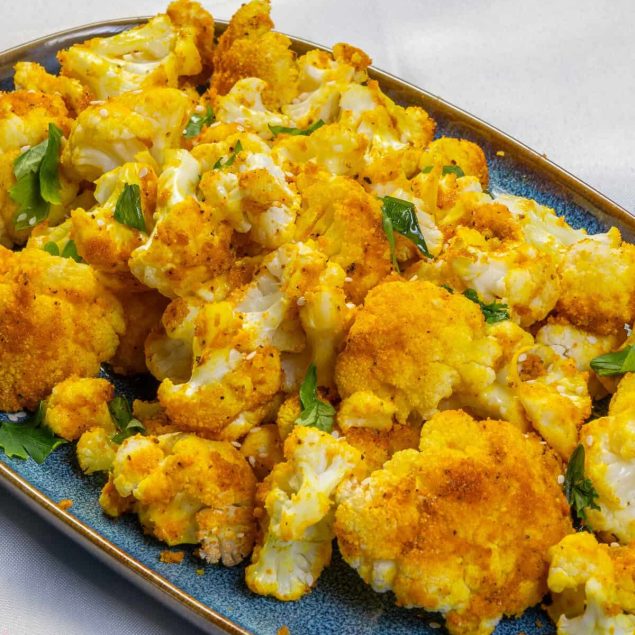
Really enjoyed the inspiration from this recipe. I used 2 teaspoons curry powder plus 1/2 teaspoon black mustard seed, which i sautéed with the bell pepper, doubled the cauliflower, and used light coconut milk. Came out delicious, even my husband enjoyed it!
Thank you, Marilyn! I’m glad you and your husband enjoyed it.